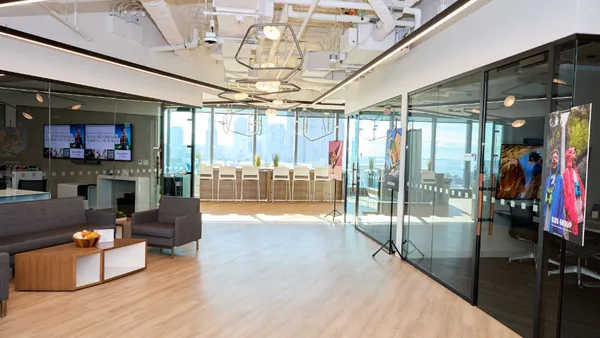Dive Brief:
-
Amazon’s assertive moves into apparel and accessories sales is being fueled by the increasing willingness on the part of consumers to buy fashion online, according to research set to be released by 1010data’s e-commerce Insights Panel. Web fashion sales rose 48% from January to April this year compared to the same period in 2014.
-
Those moves also appear to be cannibalizing its Marketplace: While Amazon’s direct fashion sales rose to to 13.5% of dollar share in 2016 from 10.3% in 2014, its Marketplace’s dollar share decreased to 21.5% from 26.3%.
-
Meanwhile, Nordstrom appears to be gaining strength in online fashion sales, now sandwiched in second place between Amazon’s Marketplace and Amazon’s direct fashion sales from its previous number three post, while Macy’s dropped to fourth place from second, according to the study.
Dive Insight:
Several observers have taken note of Amazon’s success in the fashion space, not least of which is Cowen & Co., whose research for the past three years has consistently shown that Amazon is adding shoppers, while the number of Macy’s shoppers hasn’t changed. Cowen’s numbers have led its analyst John Blackledge to predict that Amazon would leapfrog Macy’s to become the number one U.S. apparel retailer by 2017, and last month he reiterated that stance after Macy's reported disastrous Q1 earnings results.
Macy’s CEO in March speculated that Amazon may not realize what it’s up against when it comes to web sales in fashion, considering the high rate of returns and customer expectations of free fulfillment both ways. But Nick Egelanian, president of retail development consultants SiteWorks International, told Retail Dive that it’s clear that Amazon knows the burden of online fashion sales, because the site makes a point that shoppers can return fashion goods for free, which isn’t true for all orders.
Still, while e-commerce in general and fashion e-commerce in particular may be growing, that doesn’t mean it’s becoming more profitable—or profitable at all, he also said.
While Nordstrom notched up in dollar share in 1010data’s study from 2014 to 2016, the retailer recently moved to scale back its online offerings to pare down on less profitable items and fulfillment practices. The retailer, which also offers free shipping as well as free returns on all orders, said last month that it’s looking at ways to trim costs by consolidating more items, reining in supply chain costs and removing poorly selling merchandise.
As Amazon’s own fashion sales rise, its Marketplace sellers may continue to fare less well with the increased competition found on the same site. That could be a problem for Amazon, considering that some 40% of its sales come from its Marketplace, according to estimates, and many observers believe that the Marketplace is actually more profitable for the e-retail giant.















